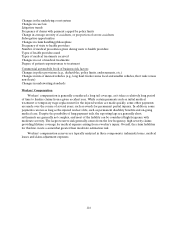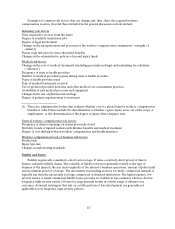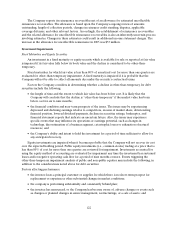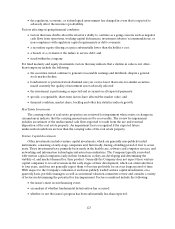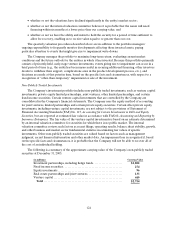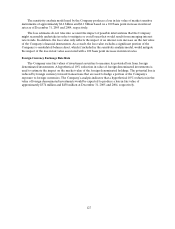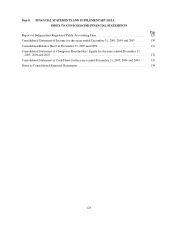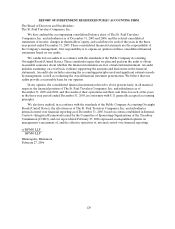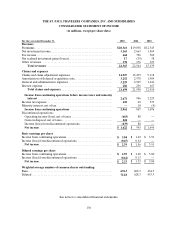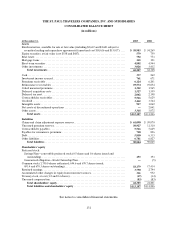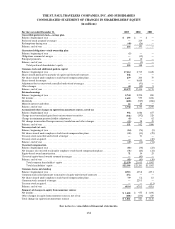Travelers 2005 Annual Report Download - page 134
Download and view the complete annual report
Please find page 134 of the 2005 Travelers annual report below. You can navigate through the pages in the report by either clicking on the pages listed below, or by using the keyword search tool below to find specific information within the annual report.122
The Company reports its reinsurance recoverables net of an allowance for estimated uncollectible
reinsurance recoverables. The allowance is based upon the Company’s ongoing review of amounts
outstanding, length of collection periods, changes inreinsurer credit standing, disputes, applicable
coverage defenses, and other relevant factors. Accordingly, the establishment of reinsurance recoverables
and the related allowance for uncollectible reinsurance recoverables is also an inherently uncertain process
involving estimates. Changes in these estimates could result in additional income statement charges. The
increase in the allowance for uncollectible reinsurance in 2005 was $53 million.
Investment Impairments
Fixed Maturities and Equity Securities
An investment in a fixed maturity or equity security which is available for sale or reported at fair value
is impaired if its fair value falls below its book value and the decline is considered to be other-than-
temporary.
Fixed maturities for which fair value is less than80% of amortized cost for more than one quarter are
evaluated for other-than-temporary impairment. A fixed maturity is impaired if it is probable that the
Company will not be able to collect all amounts due under the security’s contractual terms.
Factors the Company considers in determining whether a decline is other-than-temporary for debt
securities include the following:
•the length of time and the extent to which fair value has been below cost. It is likely that the
Company will conclude that the decline is “other-than-temporary” if the market value has been
below cost for six tonine months;
•the financial condition and near-term prospects of the issuer. The issuer may be experiencing
depressed and declining earnings relativeto competitors, erosion of market share, deteriorating
financial position, lowered dividend payments, declines in securities ratings, bankruptcy, and
financial statement reports that indicate an uncertain future. Also, the issuer may experience
specific events that may influence its operationsor earnings potential, such as changes in
technology, discontinuation of a business segment, catastrophic losses or exhaustion of natural
resources; and
•the Company’s ability and intent to hold the investment for a period of time sufficient to allow for
any anticipated recovery.
Equity investments are impaired when it becomes probable that the Company will not recover its cost
over the expected holding period. Public equity investments (i.e., common stocks) trading at a price that is
less than 80% of cost for more than one quarter are reviewed for impairment. Investments accounted for
using the equity method of accounting are evaluated for impairment any time the investment has sustained
losses and/or negative operating cash flow for a period of nine monthsor more. Events triggering the
other-than-temporary impairment analysis of public and non-public equities may include the following, in
addition to the considerationsnoted above for debt securities:
Factors affecting performance:
•the investee loses a principal customer or supplier for which there is no short-term prospect for
replacement or experiences other substantial changes in market conditions;
•the company is performingsubstantially and consistently behind plan;
•the investee has announced, or the Company has become aware of, adverse changes or events such
as changes or planned changes in senior management, restructurings, or a sale of assets; and






